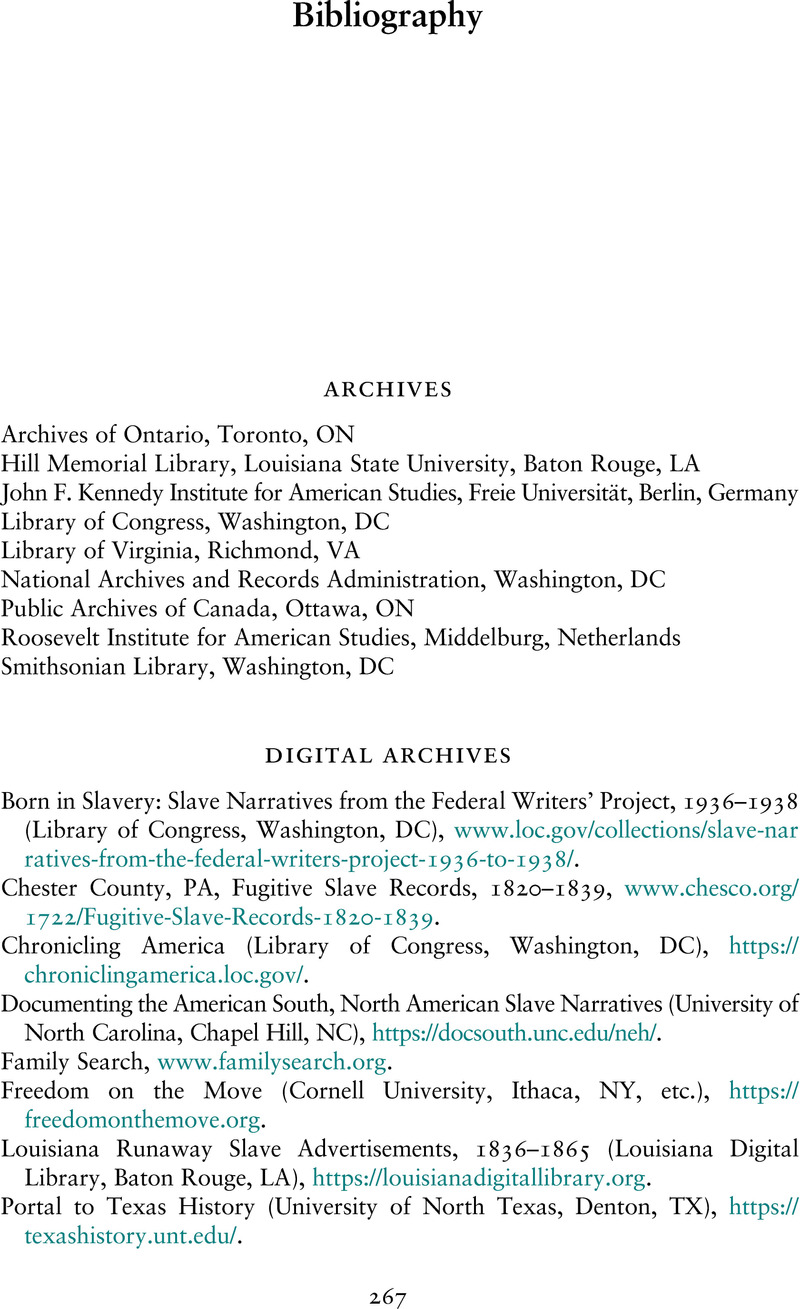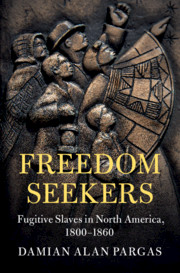Book contents
- Freedom Seekers
- Cambridge Studies on the American South
- Freedom Seekers
- Copyright page
- Contents
- Figures
- Acknowledgments
- Introduction
- 1 The Changing Geography of Slavery and Freedom
- 2 “Lurking amongst the Free Negroes”
- 3 “As If Their Own Liberty Were at Stake”
- 4 “Departure from the House of Bondage”
- Conclusion
- Bibliography
- Index
- References
Bibliography
Published online by Cambridge University Press: 19 November 2021
- Freedom Seekers
- Cambridge Studies on the American South
- Freedom Seekers
- Copyright page
- Contents
- Figures
- Acknowledgments
- Introduction
- 1 The Changing Geography of Slavery and Freedom
- 2 “Lurking amongst the Free Negroes”
- 3 “As If Their Own Liberty Were at Stake”
- 4 “Departure from the House of Bondage”
- Conclusion
- Bibliography
- Index
- References
Summary

- Type
- Chapter
- Information
- Freedom SeekersFugitive Slaves in North America, 1800–1860, pp. 267 - 292Publisher: Cambridge University PressPrint publication year: 2021



